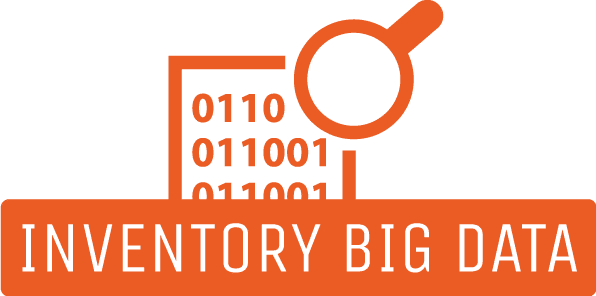Data of a Data Scientist
Explore how data scientists like Oliver turn raw data into valuable insights, driving business success. Learn about their key tasks, from data collection to model deployment, and the KPIs that measure their impact.
Description
The Role of a Data Scientist: Understanding Data and Measuring Performance
The role of a data scientist has become indispensable in today’s business world, where data-driven decisions are crucial for success. These professionals are responsible for transforming vast amounts of raw data into actionable insights. This article explores the journey of data in a data scientist’s work and the key performance indicators (KPIs) that measure their effectiveness.
The Journey of Data
1. Data Collection
The first step for a data scientist is data collection. This involves gathering information from databases, APIs, web scraping, or even manual entry. For example, Oliver, a data scientist specializing in logistics optimization, collects data on delivery times, traffic conditions, and customer feedback. The quality and quantity of this data are essential as they form the foundation for all subsequent analyses.
2. Data Cleaning
Once the data is collected, it needs to be cleaned. Raw data is often incomplete or contains errors. Oliver spends a significant amount of time at this stage to ensure the data is accurate and reliable. Data cleaning is crucial to avoid drawing incorrect conclusions from faulty data.
3. Exploratory Data Analysis (EDA)
Exploratory Data Analysis involves summarizing the main characteristics of the data and visualizing it to uncover patterns and trends. Oliver uses statistical tools and visualization techniques, such as histograms and scatter plots, to understand the distribution and relationships within the data. This step helps identify key variables and potential outliers.
4. Feature Engineering
Feature engineering is the process of transforming raw data into meaningful variables for machine learning models. For example, Oliver creates a variable representing average traffic congestion at different times of the day. Effective feature engineering can significantly enhance the performance of predictive models.
5. Model Building and Evaluation
After engineering the features, Oliver builds machine learning models to make predictions or classify data. He experiments with various algorithms, such as linear regression, decision trees, and neural networks, to find the best fit for the problem. The models are evaluated using techniques like cross-validation and performance metrics such as accuracy, precision, and recall. Oliver ensures the models are robust and generalize well to new data.
6. Deployment and Monitoring
The final step is deploying the model into a production environment where it can generate predictions on new data. Oliver works closely with IT and operations teams to integrate the model into the company’s systems. After deployment, the model’s performance is continuously monitored to ensure it remains accurate and effective. If necessary, Oliver updates the model to adapt to changing conditions or new data.
Key Performance Indicators (KPIs) for Data Scientists
To measure the effectiveness of a data scientist’s work, several KPIs are commonly used:
1. Model Accuracy
- Measures the precision of predictions or classifications made by machine learning models.
- Common metrics: error rate, precision, recall, F1-score.
2. Processing Time
- The time taken to process and analyze data, from collection to result generation.
- Includes data cleaning, exploratory analysis, model building, and evaluation phases.
3. Business Value
- The direct or indirect financial impact of analyses and models developed.
- Examples: cost reduction, revenue increase, operational efficiency improvement.
4. Project ROI
- Evaluation of the return on investment of data science projects.
- Compares benefits gained from analyses to costs incurred (time, resources, technologies).
5. Model Adoption
- Measures the rate of implementation and usage of data science models by business teams.
- Includes tracking the number of recommendations followed and predictions used in operational decisions.
6. Data Quality
- Assessment of the quality of data used: completeness, accuracy, consistency, timeliness.
- Directly impacts the reliability of analyses and models.
7. Project Success Rate
- The percentage of data science projects successfully completed and meeting their objectives.
- Includes adherence to deadlines, budgets, and functional specifications.
8. Innovation and Continuous Improvement
- Measures the innovations brought by the data scientist, such as developing new analysis methods or optimizing existing processes.
- Includes participation in R&D projects, publishing research, or implementing new technologies.
9. Stakeholder Satisfaction
- Feedback from teams and stakeholders on the quality and relevance of analyses provided.
- Can include satisfaction surveys or periodic evaluations.
10. Cross-team Collaboration
- Measures the effectiveness of collaboration with other departments, such as IT, marketing, or operations.
- Indicators: number of collaborative projects, quality of communication, knowledge sharing.
Conclusion
The journey of data from raw collection to actionable insights is a complex but rewarding process. Data scientists like Oliver play a crucial role in this journey, transforming messy datasets into valuable information that drives business success. By leveraging their expertise in data analysis, machine learning, and domain knowledge, data scientists enable companies to make smarter, data-driven decisions. KPIs help in evaluating their performance and ensuring continuous improvement, making data scientists indispensable in the modern business landscape.
Additional information
| Publication | |
|---|---|
| Department | Information Technology |
| Level | Technician |






